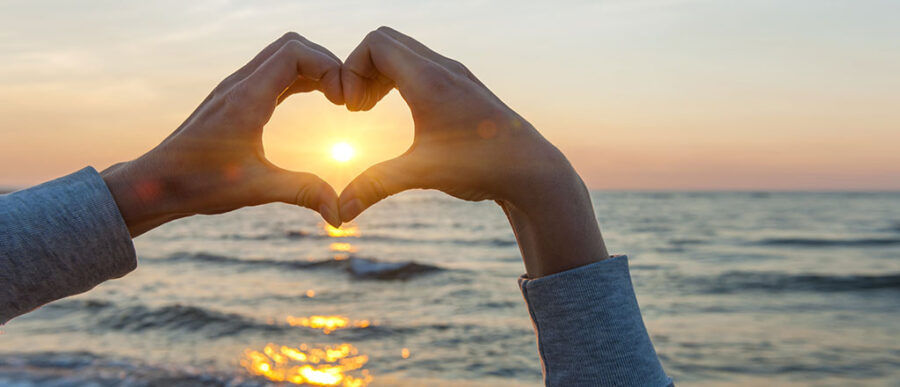While the digital age has changed the rules of marketing, a panel of experts at the recent Wharton Marketing Conference suggests that the most effective outreach, even for international brands, centers on personal connections rather than random tweets or texts.
“It is rather ironic. We have more data than ever before, but the overwhelming evidence is that customer loyalty is lower,” said Chris Malone, managing partner at Fidelum Partners, a global consumer marketing firm, who took part in a panel titled, “Building Loyal Customers in the Information Age.” For most of human history, Malone stated, “commerce was face to face, as much about the person, the relationship you had with him and what you stood for. Data can be a great tool to rebuild that. [But] you have to show that the customer is not just another cookie on the browser.”
According to panelist Vanessa Rosado, global director of digital capabilities for the multinational beverage company AB InBev, she and her employees spend an overwhelming amount of time trying to gauge how loyalty has changed and how they can keep it alive. “We have to understand our consumers, just as before — what motivates them to choose our brands, and what motivates them when they go into the store to buy them,” Rosado said. “It was relevant 100 years ago, and it is relevant today. The volume of opinions may have changed, but to be a good marketer, you need to know how to motivate the customer correctly.”
Michael Wilhite, senior vice president of insight analytics for the strategy consultant dunnhumbyUSA, noted that the most successful large companies are those that have either been acquiring data firms that pinpoint customer values, or those that are spending more time figuring out how to touch customers personally in what seems like an impersonal age.
“Walmart and Amazon are doing this now,” said Wilhite, also a panelist. “You have to make sense of the lifestyle information from your customers.” Twenty years ago, the idea was that brand loyalty was the responsibility of consumers, “but now the same thing is happening on the retailer’s side,” he noted. “It will be on the consumer’s terms — what they want when they want it. Those who succeed will find the direct connection with the consumer.”
Feeling Part of a Community
While many companies are using social media to market to customers, they are using it all wrong, the panelists pointed out.
“Just because you send me something about, for example, where I went on vacation, that is not personal. It is just plain creepy.” –Chris Malone
“Just because you send me something about, for example, where I went on vacation, that is not personal. It is just plain creepy,” said Malone. “It is like my neighbor going through my trash to find something out about me. Just because my neighbor goes through my trash doesn’t mean we have a relationship. You want to build trust, [but] that is hardly trusting.”
It all goes back to the same thing – making that personal connection, added Malone, using, as a non-digital example, his own interaction with his dry cleaner. Acknowledging that he is “relatively introverted,” Malone said he “didn’t look for a community relationship with a dry cleaner. But … each time I would go in there, she would say something personal. She would ask me how my son was doing. Then she would ask me how his baseball team did. I look up on the wall, and there are 100 family holiday photos. She made everyone who came in there feel part of her community. My wife would say, ‘We have a dry cleaner much closer to our house.’ But I don’t have the heart to leave.”
According to psychologists, people want these types of transactions, Malone added. “I have to find them digitally as well; I [have to know] that businesses are interested in me as not just a transaction.”
Meanwhile, InBev, as big as it is, has started to move that way, said Rosado. “Brands can reward customers with, say, access to a master brewer online. It shows you care about the product and want the customer to know it.” She said Bud Light did a promotion where customers could post — on the company website — a photo of themselves on the beach with a Bud Light. “Now they share that with their friends and feel communal in some way. You have to make a promise that you stand for something and hope that people will ultimately promote you through word of mouth,” even if the origin is now digital, Rosado noted.
“If you have been authentic, consumers will love you and share your brand,” she added. They will say, “‘I love it so much; I will give it on holidays or retirements.’ That is huge. You just can’t buy that with a coupon.”
“Just saying, ‘How many hashtags do I have?’ is not the purpose of digital marketing.” –Michael Wilhite
Make a mistake, though, said the panelists, and in the digital age, it can be spread worldwide in a flash. “It used to be just a small-town phenomenon. In what we now call the old days, if you were a merchant and did wrong by a customer, people knew it by church on Sunday,” said Malone. But these days, if you make a mistake, it goes out on Twitter and moves with warp speed. It can be incredibly damaging many times over, Malone noted.
Too many companies, said Wilhite, are just looking to expand the numbers they are reaching. That approach does not amount to much. “In the last five years, the volume of advertising has doubled, but just saying, ‘How many hashtags do I have?’ is not the purpose of digital marketing. That is just taking the new technology and treating it like what they knew.”
Information Haze
For one thing, the panelists said, just as companies have more data, consumers also have more access to information. In the deluge of digital marketing, good and bad, they are exposed more often to advertising pitches. Even if they want to whittle it down to the more personal pitches, the haze of information can blot out any individual message.
“Facebook has developed advertising through a social media channel, but people want social contact with friends, not just a lot of social clutter,” said Wilhite. “You want to have information when you go to a retailer’s website, not when you are having social interaction with friends. Consumers will tune out, and you will quickly become noise.”
As a marketer, “you have to be a culturally curious person. It is not enough to just read about platforms.” –Vanessa Rosado
Another observation: Too many marketers just want to use the latest thing, figuring that will give them buzz, Rosado noted. “They have to start studying those avenues better, and not just head there because it is new. Yes, we have to keep our eyes on what is next, which is why we have started an office in Palo Alto [Calif., in Silicon Valley], so we can learn who is doing big things. We have launched Bud Lab, dealing with analytics and data streams.”
But as a marketer, she added, “you have to be a culturally curious person. It is not enough to just read about platforms. If you have not used Twitter, then go on it. If you want to be a good marketer, you have to understand it. You hear about Snapchat. Don’t just say you are going to use it. Try it a couple of times. Learn about the best ways to go about it. Don’t just throw things out there.”
Malone thinks that one phrase consumers have heard enough of is “shareholder value.” They want “customer value” instead. “We really need to challenge what we call ‘conventional wisdom,’” he stated, adding that he has been out of business school for 25 years and “would say that 50% of what I learned is no longer true, or maybe was never true. It is not necessarily wrong, but in the digital age, we have to double check whether it will work.
“When we look only at shareholder value, the customer says, ‘You only care about you. You do not care about me,’” Malone noted. “If you keep the customer as the center of the discussion, not just the shareholder, you will not have to worry about loyalty, which is the real value.”
Rosado suggested that the most important goal is to stand for something. “At some point, beverages can only be so much water. You can use your data all you want, but if you are not authentic, the customer will find out even more quickly than before.
“Even celebrities like Lady Gaga see this,” Rosasdo said. “They find ways to make a personal touch.” If you are fake, you risk losing not just a few customers in the neighborhood, but global reach. “These days, the stakes can be so much higher.”



